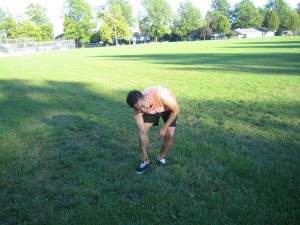Deep vein thrombosis or DVT is a condition where blood clots develop in veins found deep inside the body that results in the disruption in the flow of blood. They usually form in the thighs or the lower legs but it can also develop in other parts of the body.
https://www.youtube.com/watch?v=mMEdNCdUeAE
This condition can be dangerous when the blood clots in the veins can break and spread to the blood stream and into the lungs or brain and block flow of blood. It can cause stroke, heart attack or pulmonary embolism. It usually affects people 40 years old and above and having a family history of the condition.
Symptoms of deep vein thrombosis
- Tenderness, redness and warmth of the affected area
- Persistent pain in the calf
- Pain with dorsiflexion of the foot
- Sometimes a blood clot can break and affects circulation of blood and result to pulmonary embolism, stroke and heart attack.
- The skin becomes bluish or reddish
- Prominent veins
Tenderness, redness and warmth of the affected area - Tired legs
- Cramping of the affected area
- Swelling in the ankle, foot or leg
Causes
- Trauma or injury to the lower leg usually caused by fractures, bruised leg or complications after a surgical procedure.
- Prolonged sitting especially travelling by car, plane or train
- Immobility caused by surgery and hospitalization
- Obesity
- Pregnancy and the postpartum period
- Hypercoagulability of the blood caused by certain medications such as birth control pills, genetic predisposition, smoking and polycythemia and cancer
Treatment
- Take the prescribed blood thinners or anticoagulants. They can be injected or taken orally to decrease the clotting of the blood and prevent clots from becoming bigger and lessen the risk of developing more clots.
- For severe blood clots, take the prescribed medications for fast breaking up of the clot called clot busters or thrombolytic. These medications are given through IV line to eliminate clot of blood or another alternative through a catheter that is placed directly into the clot.
- Apply warm compress on a shallow blood clot. Soak a clean wash cloth in hot water, wring out excess water and place on the area for at least 10-15 minutes to lessen the swelling and the pain.
- Wear compression stockings on the area to lessen the inflammation and for proper flow of blood in the area.
- Take the prescribed anti-inflammatory medications such as ibuprofen and naproxen to lessen the pain and the inflammation.
- When resting elevates the leg above the level of the hip at least 3-4 times every day for 15 minutes to lessen the pressure placed on the veins. Raise the area in couple of pillows to keep it elevated.
- Perform exercises regularly such as walking at least 30 minutes or more for 5 times a week. Another alternative is swimming, biking and jogging at least 5 times every week. Perform simple leg exercises for at least 15 minutes every morning to increase flow of blood in the area, control obesity and lessen the symptoms of DVT.
- Drink plenty of fluids to prevent dehydration.

